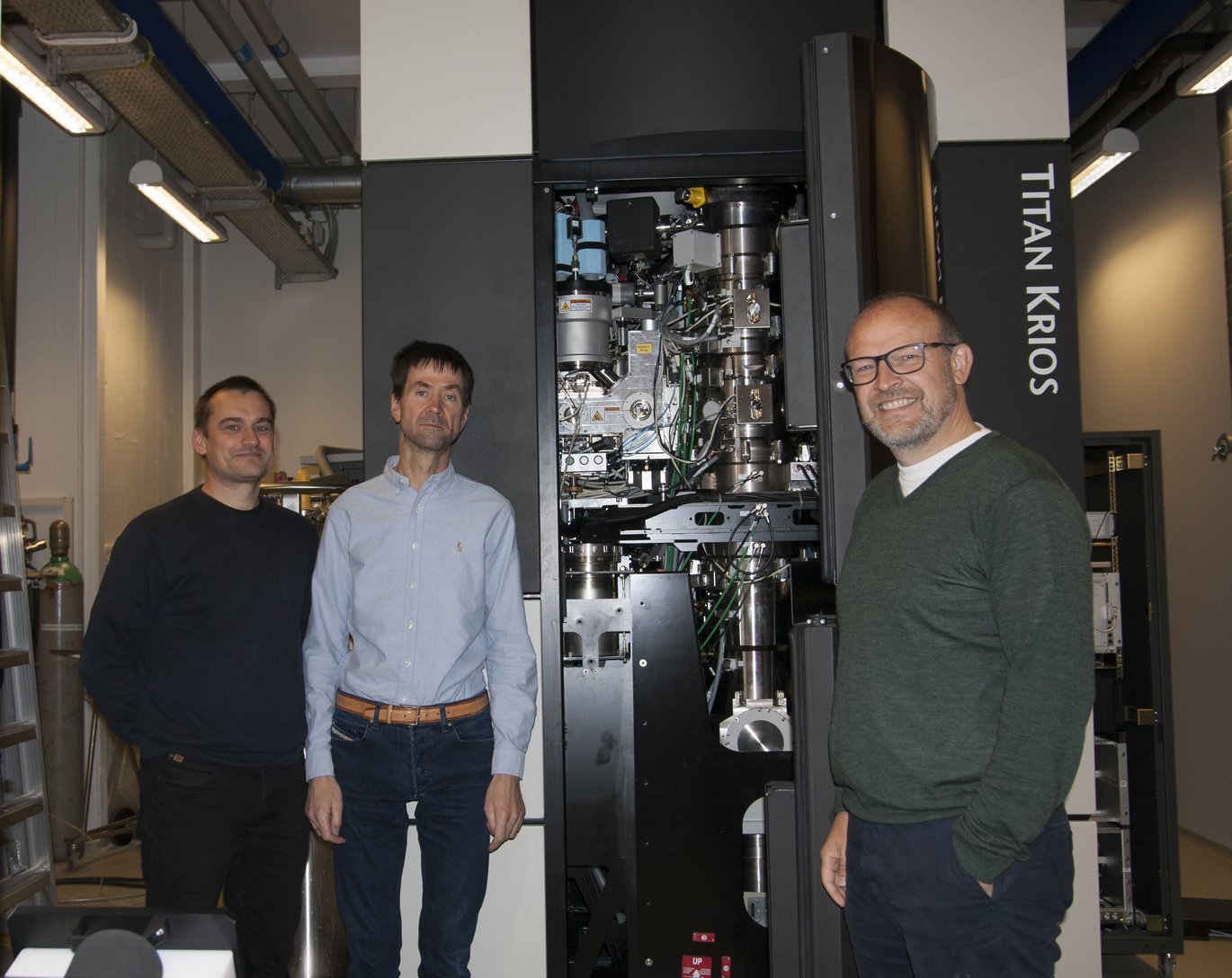New initiative will promote brain research in Denmark
Five of Denmark’s leading researchers on structural biology will collaborate on a project to gain insight into the brain’s functions and diseases. The initiative is called BRAINSTRUC and funded by Lundbeckfonden with up to DKK 60 million over a five-year period.

Structural biology in Denmark has been afforded a wonderful opportunity to intensify research on one of the most difficult areas of structural biology: the complex and dynamic interaction between proteins, membranes and other biological molecules in the human brain. Lundbeckfonden’s initiative BRAINSTRUC is driven by five of Denmark’s leading researchers on structural biology from the University of Copenhagen and Aarhus University. This generates unique opportunities for solving some of the greatest challenges in the field.
“Examining the brain’s complex biological processes is a huge challenge, not least because we’re trying to understand the structures on a molecular and atomic level. And the difficulties only increase when we try to describe how they interact and change over time. It requires a more experimental and interdisciplinary approach, which is now possible thanks to Lundbeckfonden’s visionary decision to fund our research on structural biology,” says Head of BRAINSTRUC, Associate Professor and PhD Bente Vestergaard from the University of Copenhagen.
Also in Aarhus, the researchers were enthusiastic: "We have access to the most advanced X-ray facilities just outside the country's borders, soon also neutron radiation, and with BRAINSTRUC we build together the world's leading facilities for electron microscopy in Aarhus - it is incredibly important that we exploit these opportunities by trying to solve the most difficult issues in life sciences, "says Poul Nissen, professor of protein chemistry at Aarhus University.
The research conducted at BRAINSTRUC will focus on three central processes in the brain. One area is the brain’s natural immune system and the part it plays in neurological autoimmune diseases. Another focus area is the importance of ion-transported and lipid-flipping proteins related to nerve signals and the overall structure of the membranes in nerve cells. The third focus area calls for researchers to examine the mechanism behind protein fibrillation and the correlation to Parkinson’s disease.
Interdisciplinary collaborations with great potential
The researchers in the BRAINSTRUC consortium are all experts in various disciplines within the field of structural biology, including theoretical as well as computational and experimental approaches. While there are strong traditions for professional collaborations among experts, a national and interdisciplinary initiative in this field is rather unique and expectations are high. The researchers involved in the project will work resolutely on understanding basic aspects of the brain’s function and diseases while simultaneously, this intensified national collaboration will hopefully become a breading ground for the next generation of structural biologists.
“Lundbeckfonden’s ambitions include making Denmark the world’s leading country on brain research, which is why we need to bring the country’s leading forces together, across universities and disciplines. By way of BRAINSTRUC we help to bring research on the brain from molecule to human, which will eventually benefit both patients and the society in general,” says Lene Skole, Managing Director of Lundbeckfonden.
Facts about structural biology
Structural biology examines the three-dimensional structure in proteins and other biological molecules and it establishes how they interact. This approach is central to biomedical research because it allows insight into the molecular mechanisms behind disease development and the effect of drugs. It forms the basis of the development of new types of medicine and treatments.
Researchers have long known that the three-dimensional structure of biological macromolecules is crucial to their functionality and central to researchers’ ability to understand the development of diseases in the brain. It has also become clear that these three-dimensional structures are not static; they are dynamic with an inherent flexibility. This means that the macromolecules change their structure and biological characteristics over time and that dynamic is pivotal to the function of e.g. proteins or cell membranes. These dynamics will also change as the biological molecules interact.
Currently, revolutionary world-class x-ray facilities are under way in Lund (MAX IV) and Hamburg (e-XFEL), and the European Spallation Source in Lund (ESS) will enable structural examinations by way of the world’s most intensive neutron radiation. The latest development in electron microscopy will enable a description of the atomic structures in large and complex proteins. And finally, the explosive development in computers and new means of computer simulations provides a much more deeper understanding of the dynamic characteristics of proteins. In unison, these breakthrough developments provide fundamentally new insight into the biological structures of cells, which makes it possible to highlight and answer some of the most complex biological questions currently facing the world of science. The insight provided will have tremendous effect on the understanding of protein structures and dynamics and it will allow science to find new ways of treating diseases by way of affecting the functionality and dynamic of proteins by way of drugs.
For further information, please contact
Aarhus University:
Department of Molecular Biology and Genetics:
- Professor Poul Nissen, +45 2899 2295; pn@mbg.au.dk;
- Professor Gregers Rom Andersen, +45 3025 6646; gra@mbg.au.dk
The University of Copenhagen:
- Associate Professor Bente Vestergaard (direktør), +45 35 336 403, bente.vestergaard@sund.ku.dk.
- Professor Lise Arleth, +45 35 334 795; lia@nbi.ku.dk;
- Professor Kresten Lindorff-Larsen, +45 35 322 027 lindorff@bio.ku.dk;
The Lundbeck Foundation:
- Chief of Research Anne-Marie Engel, +45 3912 8000; ame@lundbeckfonden.dk
